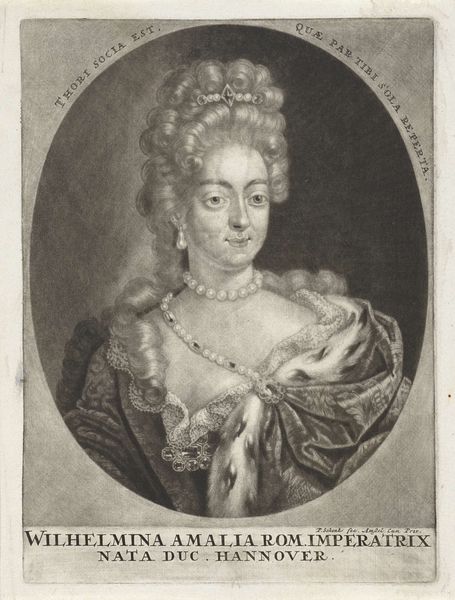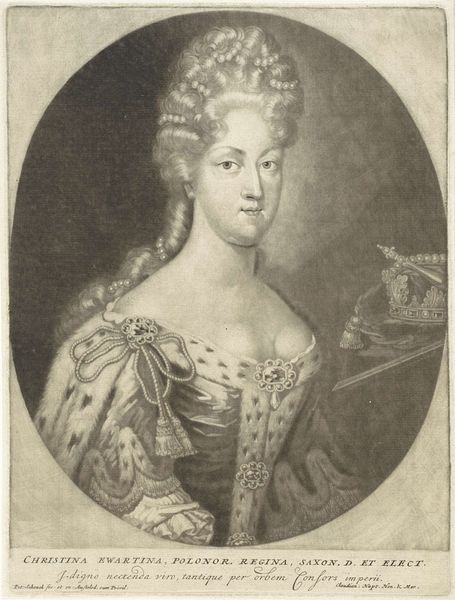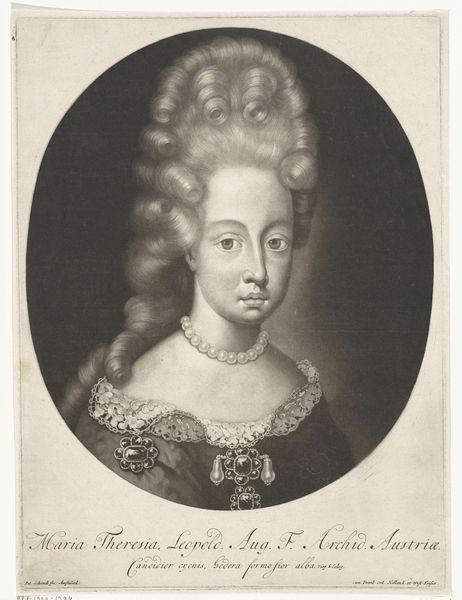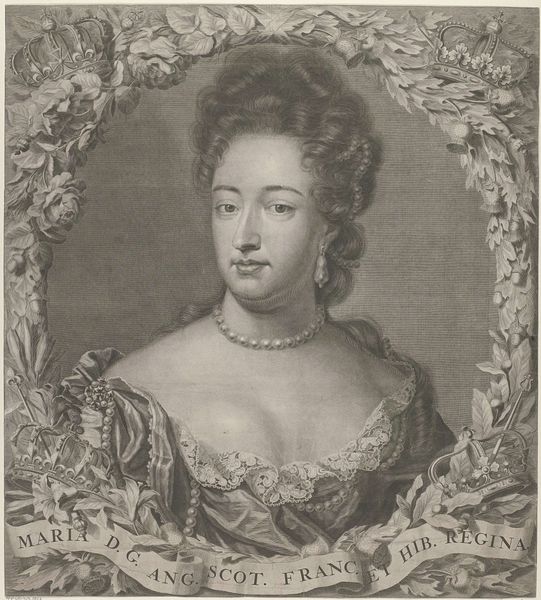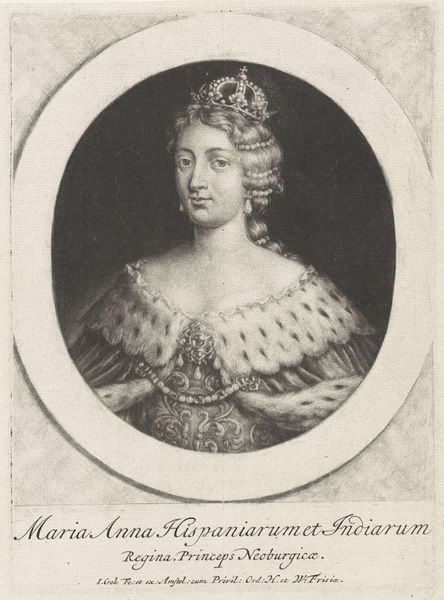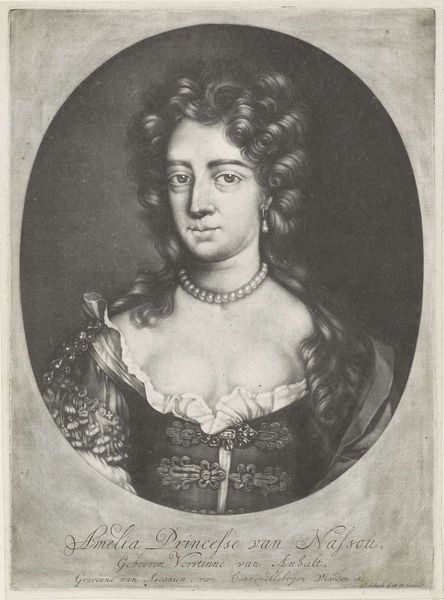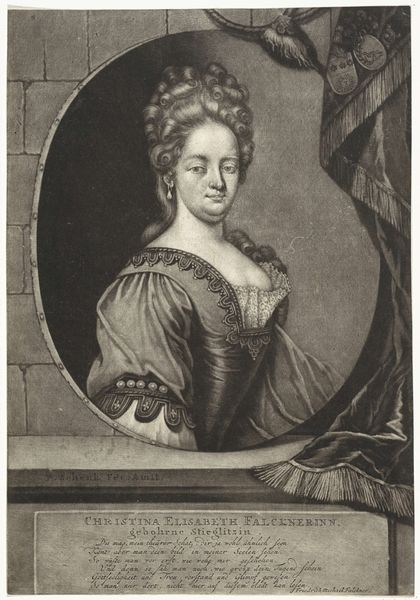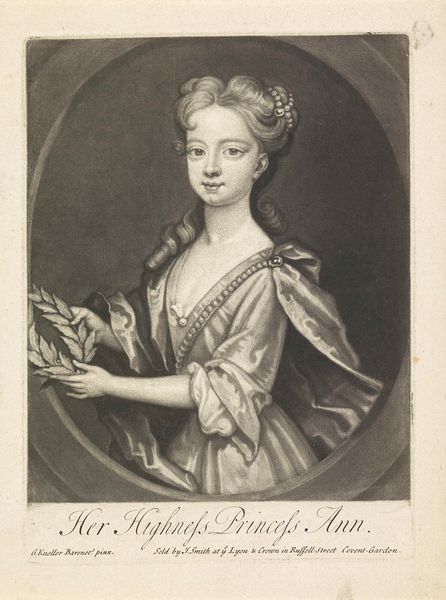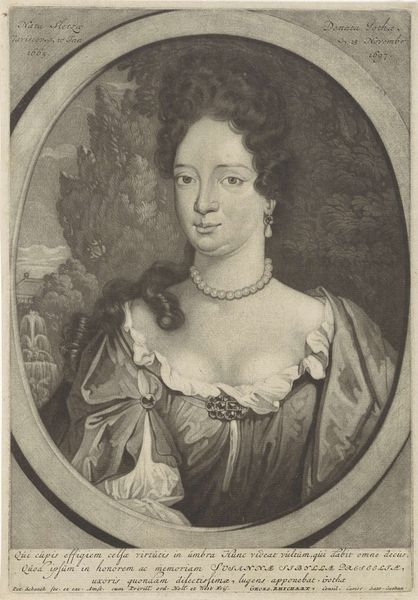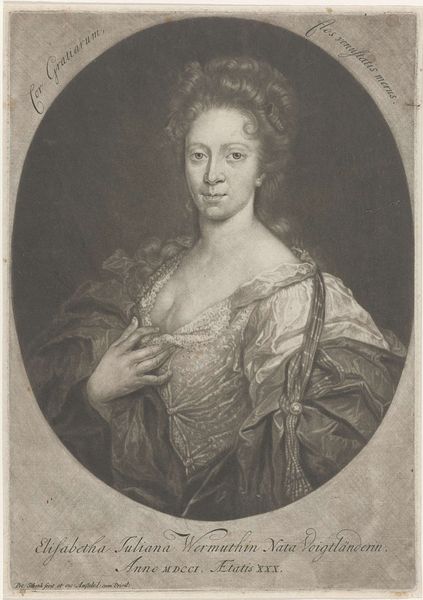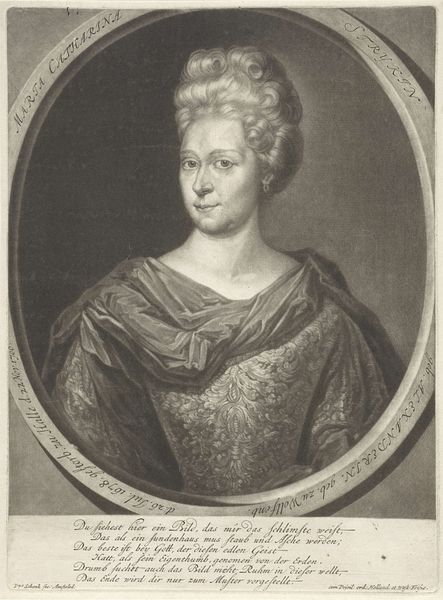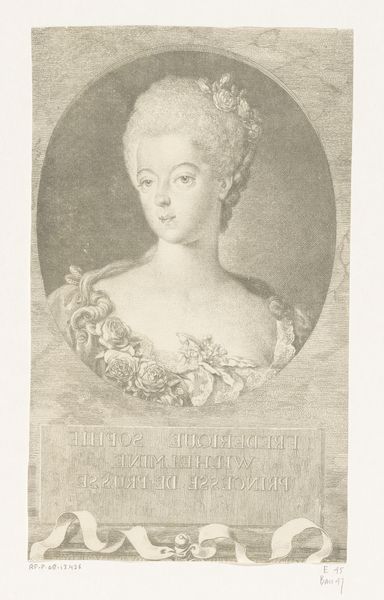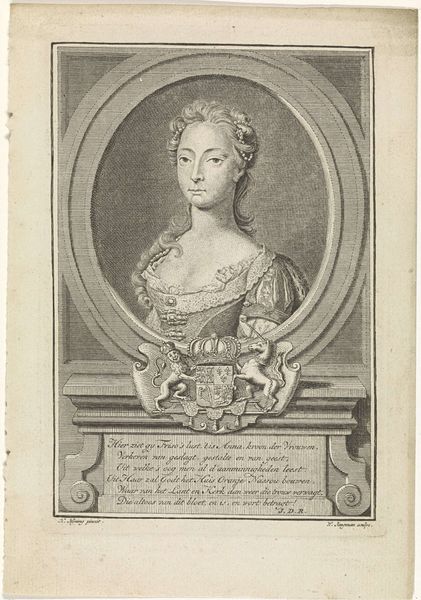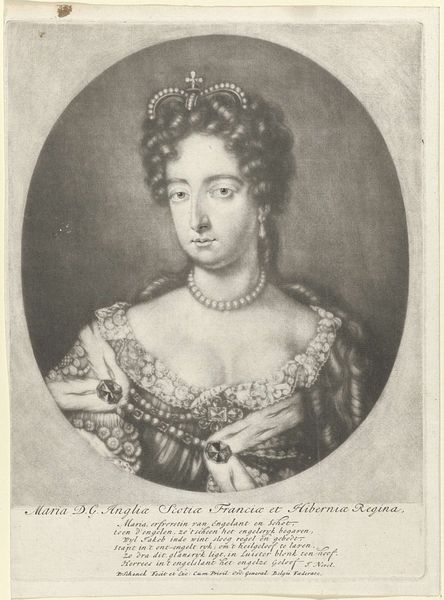
print, engraving
#
portrait
#
baroque
# print
#
figuration
#
engraving
Dimensions: height 330 mm, width 244 mm
Copyright: Rijks Museum: Open Domain
Editor: So, this is a print called "Portret van Eleonore Magdalene Therese van Palts-Neuburg" by Pieter Schenk, dating from 1670 to 1713. It's an engraving, and I'm struck by the formality of it all, the way she's presented. What do you see in this piece, particularly thinking about the historical context? Curator: The formality is key, isn't it? We see Eleonore depicted through the visual language of power. The Baroque period, particularly for women, was rife with prescribed roles. The pearl necklace, the elaborate hairstyle... all indicators of status, obviously. But how do these signifiers both empower and confine her? Does the portrait celebrate her, or reinforce societal expectations linked to nobility, marriage, and dynasty? Editor: That's fascinating. So it's not just about wealth; it’s about control, almost like a gilded cage? Do you see any ways she challenges those constraints, or are they fully enforced? Curator: I see the slightest hint of resistance perhaps in her eyes. The engraver captures a certain stillness but also a quiet intensity. Remember, her marriage was intended to secure alliances. How much agency did she truly have in shaping her destiny, beyond playing the role assigned to her? It makes me think of feminist theories and the performativity of gender, even centuries ago. Editor: That's made me rethink my initial reaction entirely. What I initially perceived as formality, is layered with complex socio-political commentary. Curator: Exactly! Art becomes a powerful tool when viewed through an intersectional lens. The portrait reveals just as much about societal expectations as it does about the individual. Editor: I'm now thinking about all the unspoken elements contained in this single portrait. Thanks for providing your perspective!
Comments
No comments
Be the first to comment and join the conversation on the ultimate creative platform.
